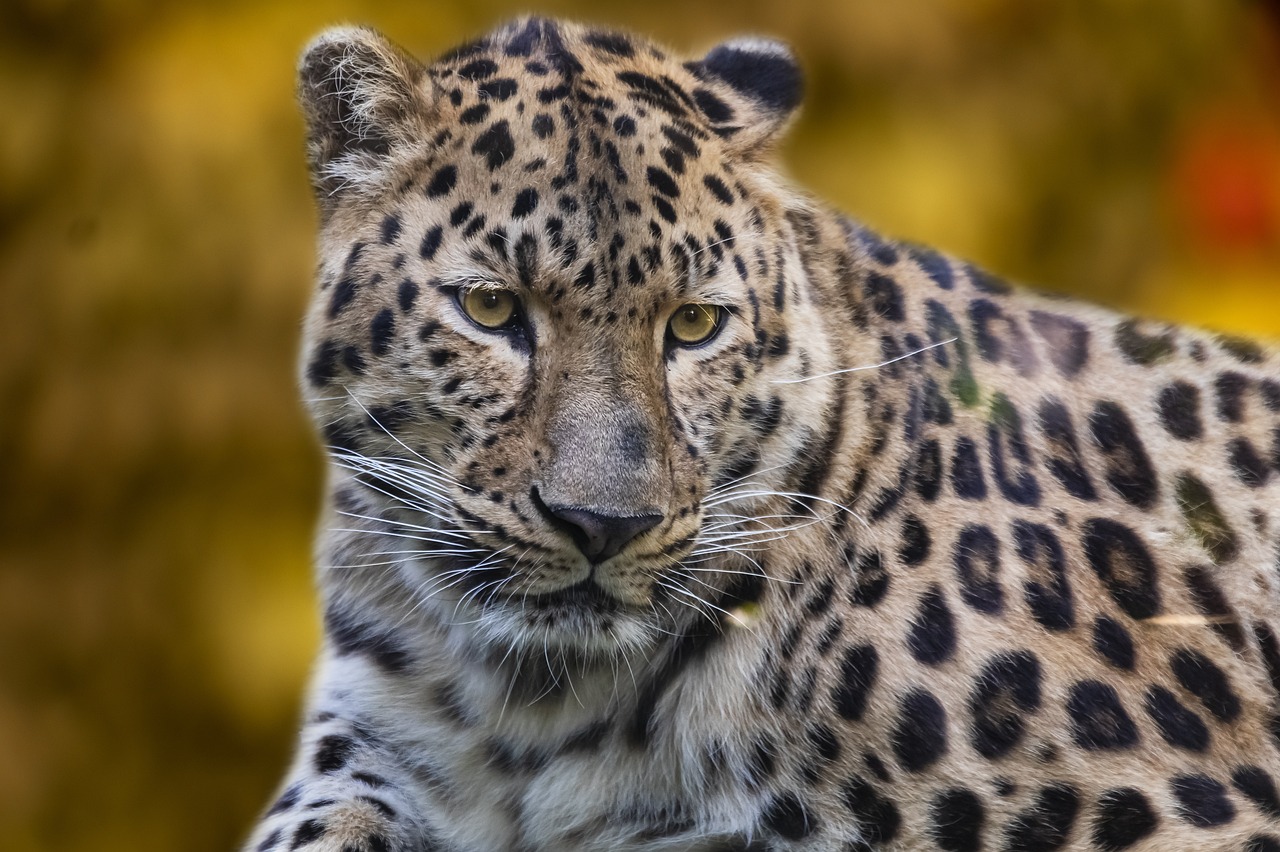West Bengal is a treasure trove of biodiversity, boasting a range of wildlife sanctuaries that serve as havens for endangered species and a paradise for nature enthusiasts. These sanctuaries not only protect the rich flora and fauna of the region but also provide visitors with unforgettable experiences in the lap of nature. This article delves into the best wildlife sanctuaries in West Bengal, highlighting their unique features and the diverse species that inhabit them.
1. Introduction to West Bengal’s Wildlife Sanctuaries
West Bengal is renowned for its diverse ecosystems, from mangrove forests to grasslands. The wildlife sanctuaries here are vital for conservation efforts, promoting biodiversity while offering unique opportunities for wildlife lovers and researchers alike.
2. Top Wildlife Sanctuaries in West Bengal
- Sundarbans National Park – A UNESCO World Heritage Site, famous for its mangrove forests and the majestic Royal Bengal Tiger.
- Buxa Tiger Reserve – Known for its dense forests and a variety of wildlife, including tigers and elephants.
- Gorumara National Park – Renowned for its population of Indian rhinoceroses and lush greenery.
- Jaldapara National Park – Home to the largest population of Indian rhinoceroses in West Bengal.
3. Sundarbans National Park
The Sundarbans is a unique ecosystem characterized by tidal waterways and small islands, supporting a rich diversity of flora and fauna. In addition to the Royal Bengal Tiger, the area is home to saltwater crocodiles, spotted deer, and various bird species, making it a biodiversity hotspot.
4. Buxa Tiger Reserve
Buxa Tiger Reserve features dense forests and a variety of wildlife, including tigers and elephants. Visitors can engage in jungle safaris, bird watching, and trekking, making it a popular destination for ecotourism.
5. Gorumara National Park
Famous for its Indian rhinoceroses, Gorumara offers various wildlife viewing opportunities amidst its rich biodiversity, including elephants and numerous bird species. The best time to visit is between November and March, when wildlife sightings are frequent.
6. Jaldapara National Park
Jaldapara is celebrated for its conservation efforts that have significantly increased the rhinoceros population. The park features diverse flora, including tall elephant grass and dense forests, providing an excellent habitat for various wildlife species.
7. Conclusion: The Importance of Wildlife Sanctuaries
Wildlife sanctuaries in West Bengal are crucial for conservation and biodiversity, offering invaluable opportunities for education, research, and eco-tourism. They help preserve the region’s natural heritage while allowing visitors to connect with nature.

1. Introduction to West Bengal’s Wildlife Sanctuaries
West Bengal is renowned for its rich biodiversity and vibrant ecosystems, making it a prime destination for wildlife enthusiasts and nature lovers. The state is home to several wildlife sanctuaries that are dedicated to the conservation of endangered species while promoting biodiversity. These sanctuaries not only protect the natural habitats of various species but also offer unique experiences for visitors interested in wildlife observation and conservation efforts.
Each sanctuary in West Bengal has its own distinct features, making them special in their own right. From the Sundarbans with its famous mangrove forests to the lush landscapes of Gorumara, these sanctuaries are vital for the survival of many species. The sanctuaries also serve as educational hubs, raising awareness about the importance of wildlife conservation and the need to protect our planet’s natural resources.
Moreover, these wildlife sanctuaries provide opportunities for ecotourism, allowing visitors to engage in activities such as jungle safaris, bird watching, and trekking. This not only enhances the visitor experience but also contributes to the local economy and fosters a sense of responsibility towards wildlife conservation.
In conclusion, the wildlife sanctuaries of West Bengal are not just places for recreation; they are essential for the conservation of endangered species and the promotion of biodiversity. By visiting these sanctuaries, individuals contribute to the ongoing efforts to protect our natural heritage and ensure that future generations can enjoy the beauty of nature.
| Sanctuary Name | Key Species | Activities |
|---|---|---|
| Sundarbans National Park | Royal Bengal Tiger, Saltwater Crocodile | Boat Safaris, Bird Watching |
| Buxa Tiger Reserve | Royal Bengal Tiger, Elephants | Jungle Safaris, Trekking |
| Gorumara National Park | Indian Rhinoceros, Elephants | Wildlife Viewing, Nature Walks |
| Jaldapara National Park | Indian Rhinoceros, Various Birds | Jeep Safaris, Bird Watching |
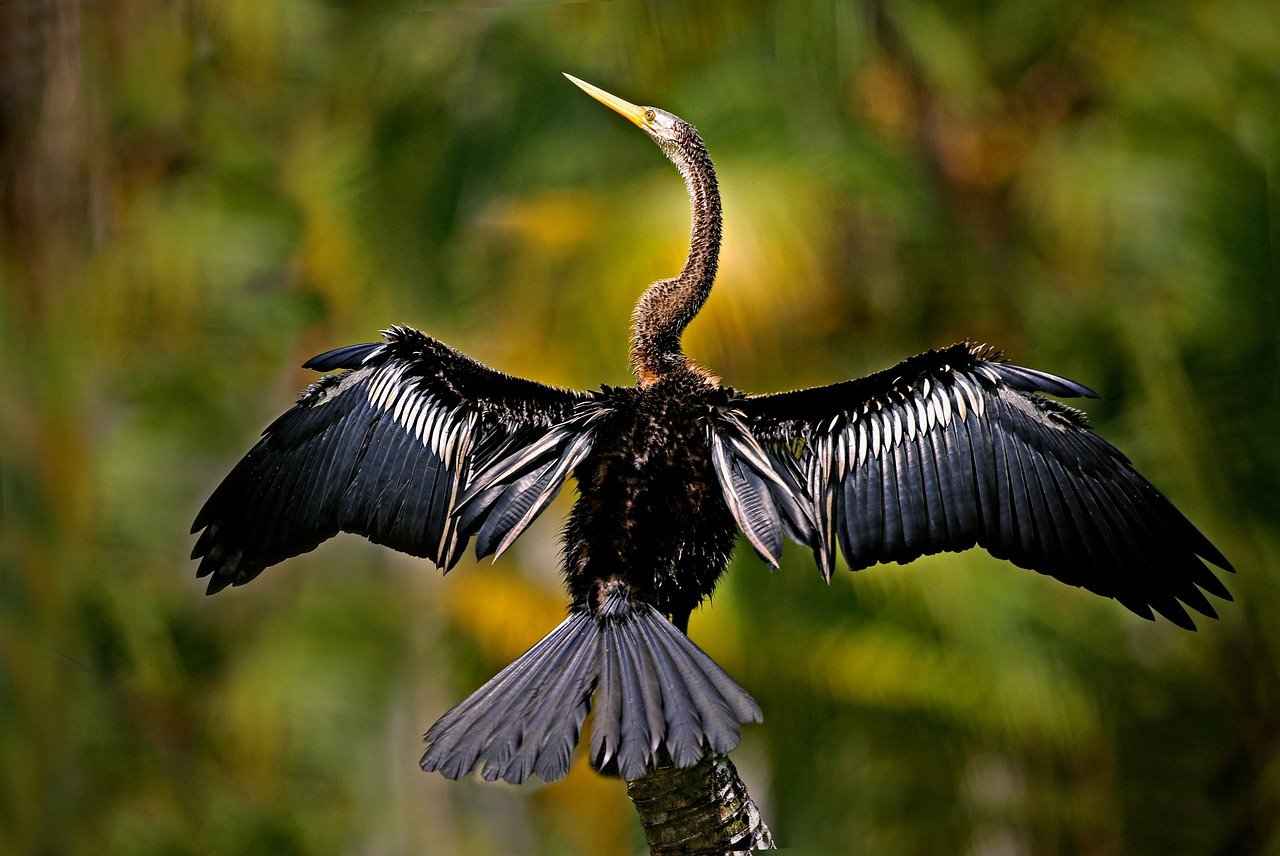
2. Top Wildlife Sanctuaries in West Bengal
Top Wildlife Sanctuaries in West Bengal
West Bengal is a treasure trove of biodiversity, boasting a variety of wildlife sanctuaries that are crucial for the conservation of numerous species. These sanctuaries not only protect endangered wildlife but also provide a habitat for a rich array of flora and fauna. Here, we delve into some of the most prominent wildlife sanctuaries in the region, highlighting their unique features and the diverse species that inhabit them.
- Sundarbans National Park: This UNESCO World Heritage Site is famous for its vast mangrove forests and is the natural habitat of the majestic Royal Bengal Tiger. The park’s intricate network of tidal waterways and mudflats creates a unique ecosystem that supports various species, including saltwater crocodiles and numerous migratory birds.
- Buxa Tiger Reserve: Nestled in the foothills of the Himalayas, Buxa is known for its dense forests and rich wildlife, including tigers, elephants, and over 200 species of birds. The reserve offers activities like jungle safaris and bird watching, making it a favorite among nature enthusiasts.
- Gorumara National Park: Renowned for its population of Indian rhinoceroses, Gorumara provides a lush landscape teeming with wildlife. Visitors can expect to see elephants, deer, and a wide variety of birds, particularly during the cooler months from November to March.
- Jaldapara National Park: Home to the largest population of Indian rhinoceroses in West Bengal, Jaldapara is a sanctuary where conservation efforts have significantly boosted the rhino population. The park’s tall elephant grass and dense forests create an ideal habitat for these magnificent creatures.
These wildlife sanctuaries are not just places for wildlife observation; they are vital for conservation efforts and ecological balance. By visiting these sanctuaries, you contribute to the preservation of West Bengal’s rich natural heritage.
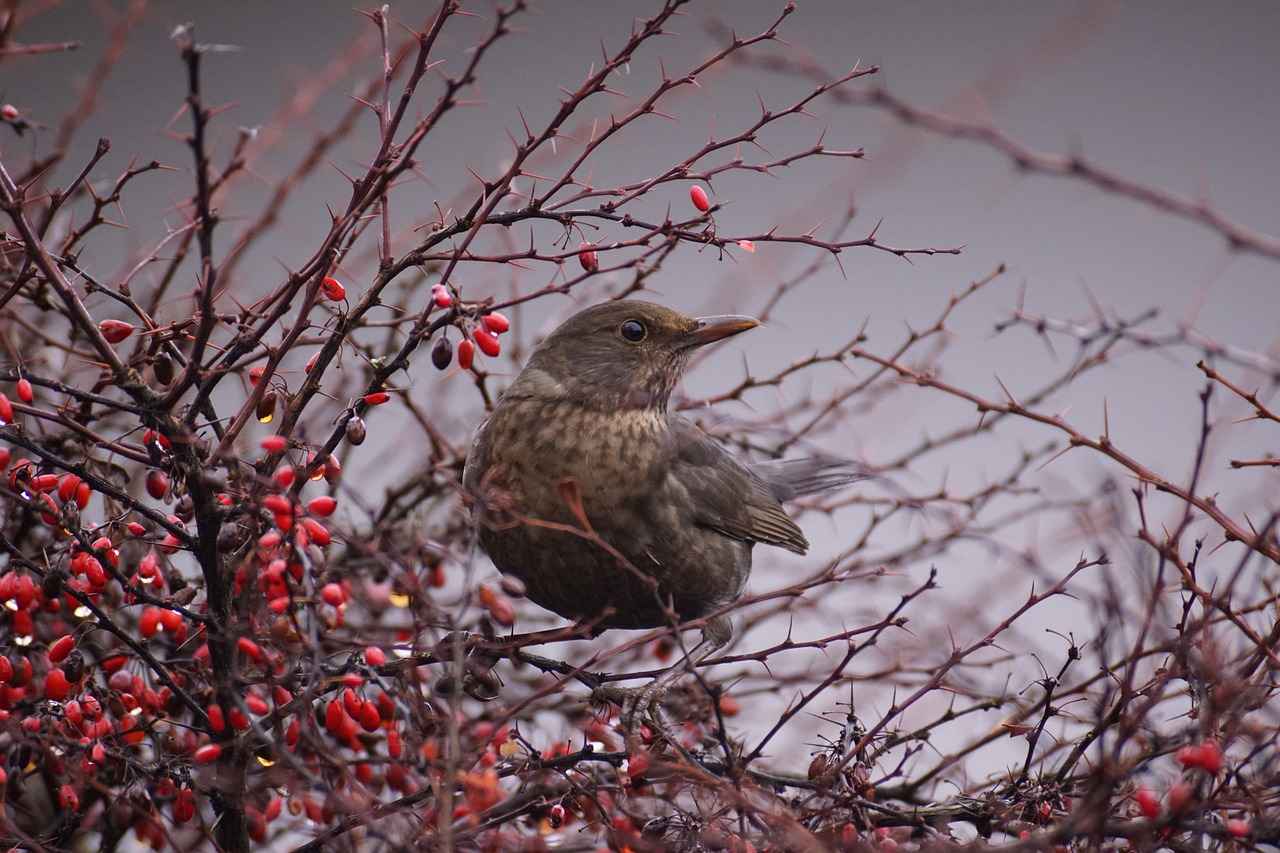
3. Sundarbans National Park
Sundarbans National Park is a remarkable destination that captivates wildlife enthusiasts and nature lovers alike. This UNESCO World Heritage Site is renowned for its extensive mangrove forests, making it the largest tidal mangrove forest in the world. Situated at the delta of the Ganges, Brahmaputra, and Meghna rivers, the park’s unique ecosystem is a sanctuary for a variety of wildlife, including the magnificent Royal Bengal Tiger.
The Sundarbans covers an area of approximately 10,000 square kilometers and is characterized by its intricate network of tidal waterways, mudflats, and small islands. The park is not only a habitat for the Royal Bengal Tiger but also supports a diverse range of flora and fauna. This includes species such as saltwater crocodiles, spotted deer, and over 300 species of birds, making it a haven for birdwatchers and wildlife photographers.
One of the most fascinating aspects of the Sundarbans is its unique ecosystem. The mangrove trees, with their complex root systems, play a crucial role in protecting the coastline from erosion and providing a breeding ground for various marine species. The park is also home to several endangered species, highlighting the importance of conservation efforts in the region.
Visitors to the Sundarbans can engage in various activities such as boat safaris, which offer an up-close view of the wildlife in their natural habitat. Guided tours are available, providing insights into the ecological significance of the area and the challenges faced by conservationists. The best time to visit is during the winter months, from November to February, when the weather is cooler and wildlife sightings are more frequent.
In conclusion, Sundarbans National Park is not just a destination; it is a vital ecosystem that plays a significant role in biodiversity conservation. Its rich natural heritage and the presence of the Royal Bengal Tiger make it a must-visit location for anyone interested in wildlife and nature.
3.1 Unique Ecosystem of Sundarbans
The Unique Ecosystem of Sundarbans
The Sundarbans is a remarkable region located in the delta of the Ganges, Brahmaputra, and Meghna rivers, renowned for its rich biodiversity and complex ecosystem. This UNESCO World Heritage Site is not only the largest mangrove forest in the world but also a vital habitat for various species, making it an essential area for conservation efforts.
Characterized by its tidal waterways, expansive mudflats, and numerous small islands, the Sundarbans supports a diverse range of flora and fauna. The intricate network of rivers and estuaries creates a unique environment that is constantly influenced by the tides, resulting in a dynamic ecosystem that is both fragile and resilient.
- Flora: The mangrove trees, such as Sundari, Goran, and Kankra, are specially adapted to thrive in saline conditions, playing a crucial role in coastal protection and habitat stability.
- Fauna: The region is home to the majestic Royal Bengal Tiger, which uses the dense mangroves for hunting. Other species include saltwater crocodiles, spotted deer, and a variety of bird species, such as kingfishers and herons.
The Sundarbans also serves as an important breeding ground for numerous fish species, which are vital for the local fishing communities. The intricate balance of life here is maintained through the interdependence of various species, making it a prime example of a healthy ecosystem.
Furthermore, the Sundarbans plays a critical role in protecting coastal areas from erosion and flooding, acting as a natural barrier against storms and rising sea levels. This ecological significance emphasizes the need for ongoing conservation efforts to preserve this unique environment for future generations.
In conclusion, the Sundarbans is not just a sanctuary for wildlife; it is a crucial ecosystem that supports diverse life forms and protects coastal communities. Understanding and preserving this unique environment is essential for maintaining biodiversity and ensuring ecological balance.
3.2 Wildlife Species in Sundarbans
The Sundarbans, a UNESCO World Heritage Site, is renowned for its vibrant and diverse ecosystem. This unique region is not only famous for its majestic Royal Bengal Tiger, but it also serves as a sanctuary for a multitude of other wildlife species, making it a critical area for biodiversity conservation.
Among the fascinating inhabitants of the Sundarbans are the saltwater crocodiles, which are known for their impressive size and adaptability to both freshwater and saltwater environments. These reptiles play an essential role in the ecosystem by helping to maintain the balance of the food chain.
Additionally, the Sundarbans is home to the spotted deer, also known as chital. These graceful animals are often seen grazing in the lush grasslands and are a favorite among wildlife photographers and enthusiasts. Their presence indicates a healthy ecosystem, as they are prey for larger predators like the Bengal tiger.
The avian population in the Sundarbans is equally remarkable, with over 300 species of birds recorded in the area. This includes both migratory and resident species, such as the majestic Brahminy Kite, the colorful Kingfisher, and the elusive White-bellied Sea Eagle. Birdwatchers flock to the region to observe these stunning creatures in their natural habitat.
Moreover, the Sundarbans supports a variety of other wildlife, including monitor lizards, fishing cats, and countless species of fish and amphibians. This incredible array of species highlights the importance of the Sundarbans as a biodiversity hotspot.
In conclusion, the wildlife species in the Sundarbans not only contribute to its ecological integrity but also attract researchers, conservationists, and tourists from around the world. Protecting this unique habitat is vital for the survival of its diverse inhabitants.
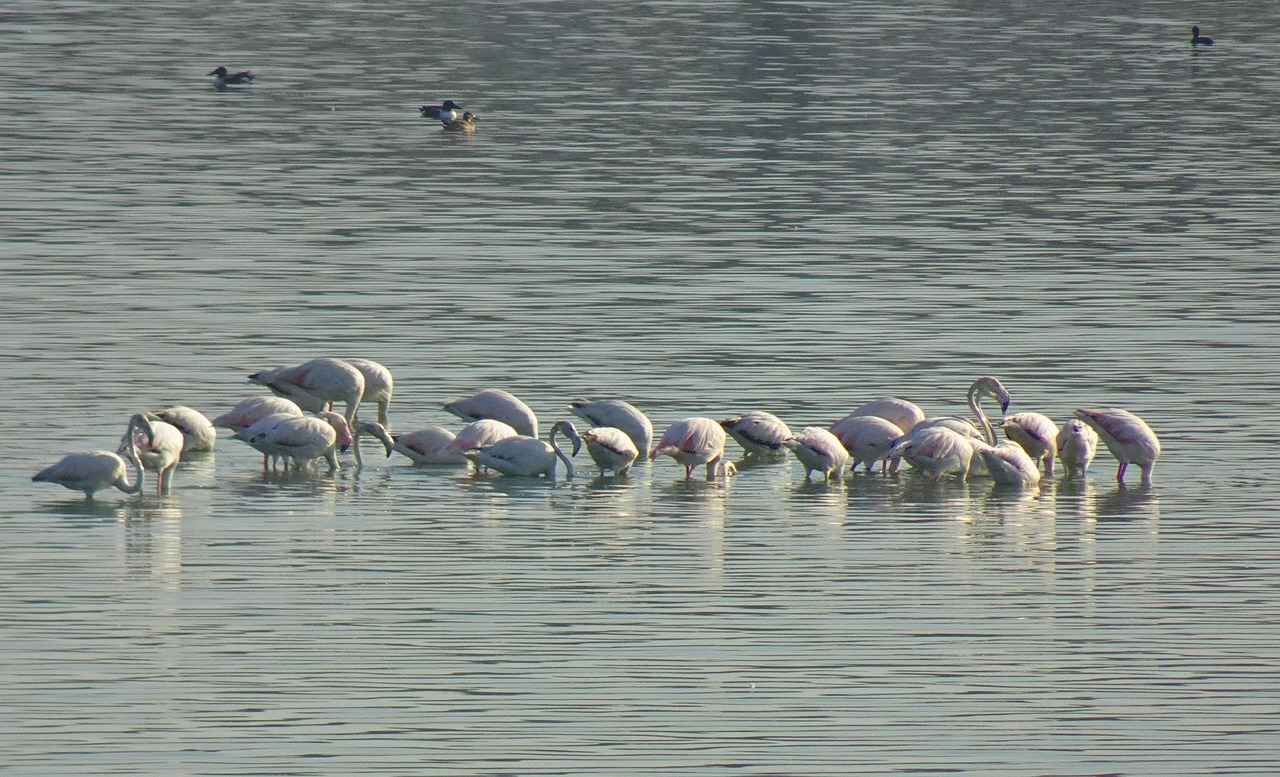
4. Buxa Tiger Reserve
Buxa Tiger Reserve is a hidden gem nestled in the foothills of the Himalayas, renowned for its dense forests and rich biodiversity. This reserve is not only home to the majestic Royal Bengal Tiger but also hosts a variety of wildlife, including elephants, leopards, and numerous bird species. Its captivating landscapes and vibrant ecosystems make it a prime destination for wildlife enthusiasts and photographers alike.
The reserve spans over 760 square kilometers and is characterized by its lush green forests, steep hills, and numerous rivers. The diverse habitats within Buxa support an impressive array of flora and fauna. Visitors can expect to encounter a variety of trees, such as sal and bamboo, which provide essential shelter and food for the wildlife.
Wildlife Photography and Ecotourism
Buxa Tiger Reserve has gained popularity among wildlife photographers and ecotourists. The opportunity to capture stunning images of tigers in their natural habitat, along with various other species such as Indian elephants and colorful birds, makes it a paradise for shutterbugs. The best time for photography is during the early morning or late afternoon when animals are most active.
Activities to Enjoy in Buxa Tiger Reserve
- Jungle Safaris: Guided safaris allow visitors to explore the reserve’s rich biodiversity while maintaining a safe distance from the wildlife.
- Bird Watching: With over 300 species of birds, including the rare Great Indian Hornbill, bird watching is a popular activity.
- Trekking: Adventurous trails through the forests provide an immersive experience, allowing visitors to connect with nature.
In conclusion, Buxa Tiger Reserve stands out as a vital sanctuary for wildlife conservation and a breathtaking destination for nature lovers. Its unique blend of rich biodiversity, stunning landscapes, and ecotourism opportunities make it a must-visit location for anyone seeking to experience the beauty of India’s natural heritage.
4.1 Flora and Fauna of Buxa
The Buxa Tiger Reserve is a remarkable ecosystem that showcases the stunning diversity of flora and fauna found in West Bengal. This reserve is characterized by its lush landscapes, which include dense forests, rolling hills, and open grasslands. The area is predominantly covered with sal trees and extensive bamboo groves, creating a rich habitat that supports a variety of wildlife.
Sal trees, known for their sturdy wood and ecological significance, dominate the forest cover. These trees not only provide shelter but also serve as a food source for various herbivores. The bamboo groves, on the other hand, are crucial for the survival of many species, including the elusive Bengal tiger and the Indian elephant. These plants offer both sustenance and a safe haven for wildlife, contributing to the ecological balance within the reserve.
In addition to sal trees and bamboo, the reserve is home to a variety of other plant species, including shrubs, ferns, and flowering plants, which together create a vibrant ecosystem. This diversity of flora supports an equally diverse range of fauna. The reserve is inhabited by numerous animal species, including:
- Bengal Tigers
- Indian Elephants
- Leopards
- Various species of deer
- Birds such as hornbills and eagles
The interdependence of flora and fauna in Buxa Tiger Reserve is a testament to the region’s rich biodiversity. The preservation of this delicate balance is vital for the survival of both plant and animal species, making Buxa not only a sanctuary for wildlife but also a critical area for conservation efforts.
Visitors to the reserve can witness this incredible biodiversity firsthand, making it a prime destination for nature lovers and wildlife enthusiasts alike.
4.2 Activities in Buxa Tiger Reserve
Visitors to Buxa Tiger Reserve are treated to a variety of exhilarating activities that allow them to connect deeply with the stunning natural environment. The reserve, known for its rich biodiversity and lush landscapes, offers a range of experiences that cater to all types of nature enthusiasts.
- Jungle Safaris: One of the most popular activities, jungle safaris provide an exciting opportunity to explore the reserve’s dense forests. Guided by experienced naturalists, visitors can spot a diverse array of wildlife, including the elusive Bengal tiger, elephants, and various species of birds.
- Bird Watching: Buxa is a paradise for bird watchers, boasting over 300 species of birds. From the vibrant Indian Peafowl to the majestic Great Hornbill, enthusiasts can enjoy a day of spotting and photographing these avian wonders in their natural habitat.
- Trekking: For those who prefer a more active approach, trekking through the reserve’s scenic trails offers a unique way to appreciate the flora and fauna. The treks vary in difficulty and length, making it accessible for both casual walkers and seasoned trekkers.
- Nature Walks: Guided nature walks are another fantastic way to immerse oneself in the tranquility of Buxa. These walks often include educational components, where guides share insights about the ecosystem, plant life, and animal behavior.
- Photography: With its stunning landscapes and diverse wildlife, Buxa Tiger Reserve is a photographer’s dream. Whether capturing the golden hues of sunrise over the hills or the intricate details of a butterfly, the opportunities for breathtaking photography are endless.
In conclusion, the activities available in Buxa Tiger Reserve not only enhance the visitor experience but also promote awareness and appreciation for wildlife conservation. Engaging in these activities allows visitors to create lasting memories while supporting the preservation of this vital ecosystem.

5. Gorumara National Park
Nestled in the foothills of the Himalayas, Gorumara National Park is a remarkable wildlife sanctuary renowned for its thriving population of Indian rhinoceroses. This park is not just a haven for these majestic creatures, but it also offers a plethora of wildlife viewing opportunities amidst its lush greenery and diverse ecosystems.
The park spans over 79 square kilometers and is characterized by its dense forests, grasslands, and riverine ecosystems. The rich biodiversity found here attracts nature enthusiasts from around the globe. Visitors can expect to encounter not only the Indian rhinoceros but also a variety of other wildlife species, including elephants, leopards, and several deer species.
| Wildlife Species | Habitat |
|---|---|
| Indian Rhinoceros | Grasslands and riverbanks |
| Asian Elephant | Forested areas |
| Leopard | Dense forests |
| Various Bird Species | Wetlands and forests |
In addition to its wildlife, Gorumara is also home to various flora, including tall grasses and deciduous trees that provide essential habitats for many species. Birdwatchers will find themselves enchanted by the myriad of bird species that inhabit the park, making it a paradise for both amateur and professional photographers.
5.1 Rich Biodiversity of Gorumara
The park’s rich biodiversity is crucial for maintaining ecological balance. The presence of various species helps to sustain the food chain and contributes to the overall health of the ecosystem. Visitors can take part in guided safaris to explore the park’s diverse habitats and witness the wildlife in their natural settings.
5.2 Best Time to Visit Gorumara
The ideal time to visit Gorumara National Park is between November and March. During these months, the weather is pleasant, and wildlife sightings are more frequent, providing an excellent opportunity for visitors to experience the park’s beauty and wildlife.
In conclusion, Gorumara National Park stands as a testament to West Bengal’s rich natural heritage, offering an unforgettable experience for wildlife enthusiasts and conservationists alike. Its diverse ecosystems and thriving wildlife populations make it a must-visit destination for anyone looking to connect with nature.
5.1 Rich Biodiversity of Gorumara
Gorumara National Park, located in the northern part of West Bengal, is a treasure trove for biodiversity enthusiasts. This park is not only renowned for its stunning landscapes but also for its rich variety of wildlife and plant species. The park’s ecosystem is a harmonious blend of grasslands, forests, and riverine habitats, making it an ideal sanctuary for a plethora of animals.
- Elephants: Gorumara is home to a significant population of Indian elephants, which can often be seen roaming freely in the park. Their presence is a vital part of the ecosystem, as they help in maintaining the forest structure.
- Deer Species: The park hosts various deer species, including the spotted deer and barking deer. These graceful animals can frequently be spotted during early mornings or late afternoons.
- Bird Species: Birdwatchers will find Gorumara particularly appealing, as it boasts over 200 species of birds. From the majestic Indian Hornbill to the colorful Kingfisher, the avian diversity is remarkable.
The park’s diverse habitats support not only large mammals but also a myriad of smaller creatures, including reptiles and insects. This intricate web of life contributes to the park’s status as a biodiversity hotspot.
Moreover, the lush greenery and varied landscapes provide excellent opportunities for wildlife photography. Nature lovers can capture stunning images of animals in their natural habitat, making Gorumara a paradise for photographers.
In conclusion, Gorumara National Park’s rich biodiversity, featuring elephants, deer, and a myriad of bird species, creates a vibrant ecosystem that attracts nature lovers and wildlife enthusiasts from all over. This sanctuary not only plays a crucial role in conservation but also offers visitors a chance to connect deeply with nature.
5.2 Best Time to Visit Gorumara
When planning a visit to Gorumara National Park, timing is crucial for maximizing your wildlife experience. The ideal time to visit Gorumara is between November and March. During these months, the weather is not only pleasant but also conducive to wildlife sightings, enhancing your chances of encountering the park’s diverse fauna.
As the winter months approach, the temperatures in Gorumara range from a comfortable 10°C to 25°C. This climate is perfect for both wildlife and visitors, making it an excellent time for safaris and nature walks. The cool weather encourages animals to be more active, increasing the likelihood of spotting the majestic Indian rhinoceros, elephants, and a variety of bird species.
Moreover, the dry season during these months means that water sources become limited, prompting wildlife to congregate around the remaining water bodies. This phenomenon provides an excellent opportunity for wildlife enthusiasts and photographers to capture stunning images of animals in their natural habitat.
Visitors can also enjoy the beauty of the park’s lush greenery, which remains vibrant due to the post-monsoon rejuvenation. The park’s landscape, dotted with tall grasses and dense forests, offers a picturesque backdrop for your adventures.
In summary, if you’re looking to experience the best of Gorumara National Park, plan your trip between November and March. The combination of pleasant weather and abundant wildlife sightings makes this period the perfect time for an unforgettable adventure in one of West Bengal’s premier wildlife sanctuaries.
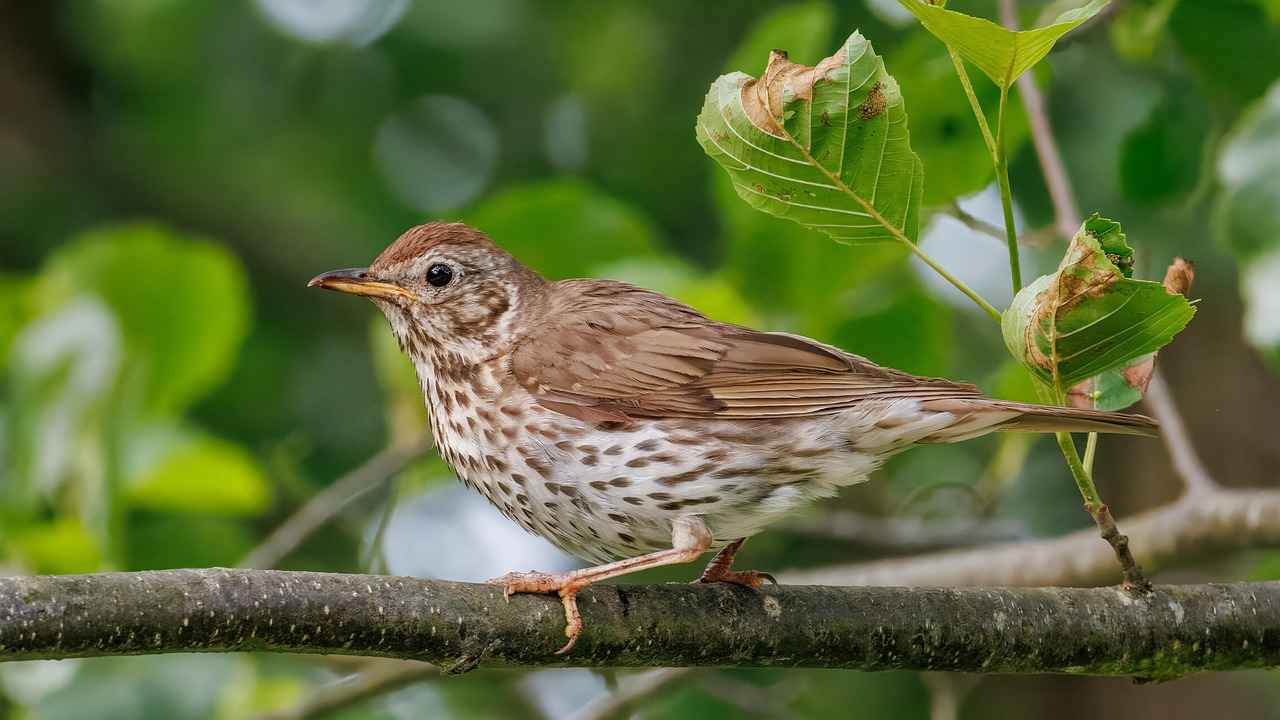
6. Jaldapara National Park
Located in the heart of West Bengal, Jaldapara National Park is a breathtaking haven for wildlife enthusiasts and nature lovers. This park is renowned for being home to the largest population of Indian rhinoceroses in the state, providing a remarkable opportunity to observe these magnificent creatures in their natural habitat. The park spans over 216 square kilometers and is characterized by its rich biodiversity and stunning landscapes.
The park’s diverse ecosystems include grasslands, forests, and riverine habitats, which support a variety of wildlife species. Besides the Indian rhinoceros, visitors may also encounter elephants, deer, and an array of bird species, making it a paradise for wildlife photographers and bird watchers alike.
6.1 Conservation Efforts in Jaldapara
Conservation initiatives in Jaldapara have been instrumental in increasing the rhinoceros population, showcasing the success of wildlife preservation efforts. The park is actively involved in anti-poaching measures and habitat management, ensuring a safe environment for its inhabitants. These efforts have not only benefited the rhinoceros but have also contributed to the overall ecological balance of the region.
6.2 Exploring Jaldapara’s Flora
The park’s flora is equally impressive, featuring tall elephant grass, dense forests, and various species of trees that create a rich habitat for wildlife. The lush greenery not only enhances the park’s beauty but also plays a crucial role in supporting the diverse animal life that calls Jaldapara home.
Visitors to Jaldapara can engage in a variety of activities, including jeep safaris, elephant rides, and guided nature walks, providing an immersive experience in the heart of nature. The best time to visit is between November and March, when the weather is pleasant, and wildlife sightings are more frequent.
In conclusion, Jaldapara National Park stands as a testament to the importance of wildlife conservation. Its thriving population of Indian rhinoceroses and rich biodiversity make it a must-visit destination for anyone looking to connect with nature and witness the beauty of wildlife in West Bengal.
6.1 Conservation Efforts in Jaldapara
Conservation Efforts in Jaldapara National Park
The Jaldapara National Park, located in the Alipurduar district of West Bengal, has become a beacon of hope for wildlife conservation, particularly for the Indian rhinoceros. Over the years, dedicated conservation efforts have resulted in a remarkable resurgence of the rhinoceros population, showcasing the effectiveness of various wildlife preservation initiatives in the region.
One of the key strategies implemented in Jaldapara has been the establishment of anti-poaching units. These specialized teams work tirelessly to protect the rhinoceros and other endangered species from poaching activities. Through rigorous patrolling and surveillance, these units have significantly reduced illegal hunting, ensuring the safety of these majestic creatures.
In addition to anti-poaching measures, habitat restoration has played a crucial role in the conservation success story of Jaldapara. Efforts to restore and maintain the natural habitat have led to improved living conditions for the rhinoceros and other wildlife. The park’s dense forests and tall elephant grass provide essential cover and food sources, allowing the rhinoceros population to thrive.
Community involvement has also been a vital component of the conservation strategy. Local communities have been educated about the importance of biodiversity and the need to protect wildlife. This has fostered a sense of ownership and responsibility towards the park’s natural resources, leading to increased support for conservation efforts.
Furthermore, the park has become a hub for ecotourism, which generates revenue that can be reinvested into conservation initiatives. By promoting responsible tourism, Jaldapara not only raises awareness about wildlife conservation but also provides economic benefits to local communities, creating a sustainable model for preserving the region’s rich biodiversity.
In conclusion, the conservation efforts in Jaldapara National Park serve as a model for successful wildlife preservation. The collaborative approach, combining law enforcement, habitat restoration, community engagement, and ecotourism, has led to a significant increase in the rhinoceros population, highlighting the importance of continued commitment to conservation in the region.
6.2 Exploring Jaldapara’s Flora
Exploring Jaldapara’s Flora
Jaldapara National Park, renowned for its rich biodiversity, is not just a haven for wildlife enthusiasts but also a treasure trove of flora. The park’s unique ecosystems create a vibrant tapestry of plant life, which plays a crucial role in supporting the diverse animal species that inhabit the area.
One of the most notable features of Jaldapara’s flora is the presence of tall elephant grass, which dominates the landscape. This grass not only provides cover for various wildlife but also serves as a vital food source for herbivores such as rhinos and deer. The dense thickets of elephant grass create a perfect habitat for these animals, allowing them to thrive in their natural surroundings.
In addition to elephant grass, the park is home to a variety of deciduous forests, which are characterized by their seasonal changes. These forests are primarily composed of sal trees, bamboo groves, and various shrubs, creating a rich ecosystem that supports a wide range of wildlife. The diversity of plant life ensures that the habitat remains balanced and sustainable, providing shelter and food for countless species.
- Sal Trees: These trees are significant in the park, offering habitat and food for many animals.
- Bamboo Groves: Bamboo not only supports the local fauna but also plays a role in the ecological balance.
- Wildflowers: The park bursts into color with various wildflowers, attracting pollinators and enhancing the beauty of the landscape.
The interplay between flora and fauna in Jaldapara is vital for maintaining the ecological integrity of the region. The diverse plant species create a network that supports the park’s wildlife, demonstrating the importance of conserving these natural habitats. By protecting the flora, we ensure the survival of the unique wildlife that calls Jaldapara home.
In conclusion, Jaldapara National Park offers a remarkable glimpse into the intricate relationships between plants and animals. The park’s rich flora not only enhances its beauty but also plays a crucial role in sustaining its diverse wildlife populations.
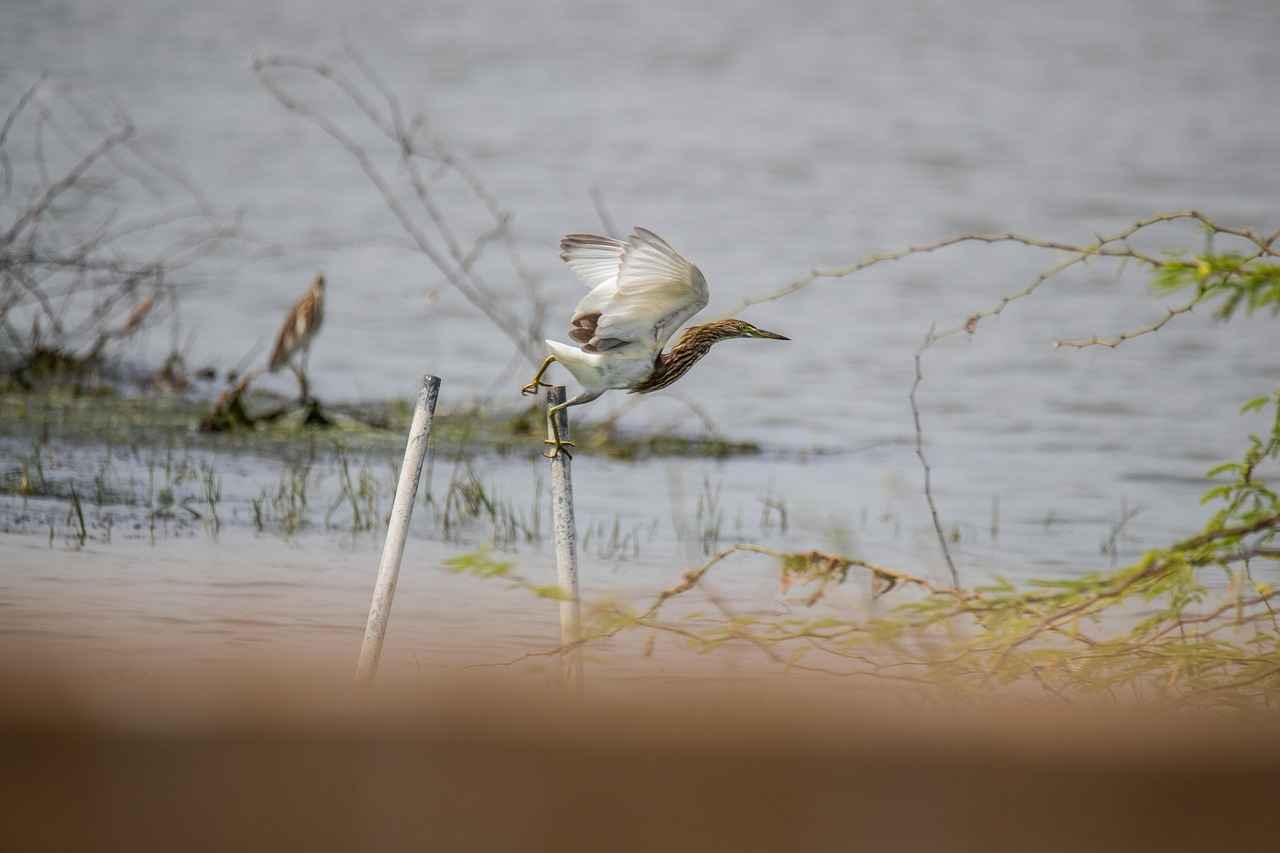
7. Conclusion: The Importance of Wildlife Sanctuaries
Wildlife sanctuaries in West Bengal are not only essential for the conservation of various species but also serve as vital educational and research platforms. These protected areas are critical in maintaining the region’s biodiversity and ensuring the survival of endangered species. By offering a safe haven for wildlife, these sanctuaries play a significant role in preserving the ecological balance of the region.
One of the key functions of wildlife sanctuaries is to provide a space for research and education. Researchers and students can study the unique ecosystems and the interactions between species in their natural habitats. This research is crucial for developing effective conservation strategies and understanding the impacts of climate change on wildlife.
Moreover, these sanctuaries create opportunities for eco-tourism, attracting nature enthusiasts from around the globe. Visitors can engage in activities such as bird watching, jungle safaris, and guided tours, which not only enhance their appreciation for nature but also contribute to the local economy. The revenue generated from eco-tourism can be reinvested into conservation efforts, further supporting the sanctuaries’ missions.
Additionally, wildlife sanctuaries serve as a crucial link between humans and nature. They foster a sense of responsibility among visitors, encouraging them to take part in conservation efforts, whether through volunteering or advocacy. By raising awareness about the importance of protecting wildlife and their habitats, these sanctuaries play a pivotal role in shaping public perceptions and behaviors towards conservation.
In conclusion, the importance of wildlife sanctuaries in West Bengal cannot be overstated. They are essential for conservation, education, and eco-tourism, helping to preserve the region’s natural heritage. By protecting wildlife and promoting biodiversity, these sanctuaries ensure that future generations can enjoy the rich and diverse ecosystems that West Bengal has to offer.
Frequently Asked Questions
- What are the best wildlife sanctuaries to visit in West Bengal?
Some of the top wildlife sanctuaries in West Bengal include Sundarbans National Park, Buxa Tiger Reserve, Gorumara National Park, and Jaldapara National Park. Each sanctuary offers unique experiences and diverse wildlife.
- When is the best time to visit these wildlife sanctuaries?
The ideal time to explore these sanctuaries is generally between November and March. During this period, the weather is pleasant, and wildlife sightings are more frequent.
- What types of wildlife can I expect to see?
Visitors can expect to see a variety of species, including the majestic Royal Bengal Tiger, Indian rhinoceroses, elephants, and numerous bird species. Each sanctuary boasts its own unique wildlife.
- Are there any activities available for visitors?
Absolutely! Many sanctuaries offer activities such as jungle safaris, bird watching, and trekking. These activities provide an immersive experience in nature.
- How do conservation efforts impact wildlife in these sanctuaries?
Conservation efforts in these sanctuaries have led to significant increases in wildlife populations, showcasing the success of initiatives aimed at preserving endangered species and promoting biodiversity.
